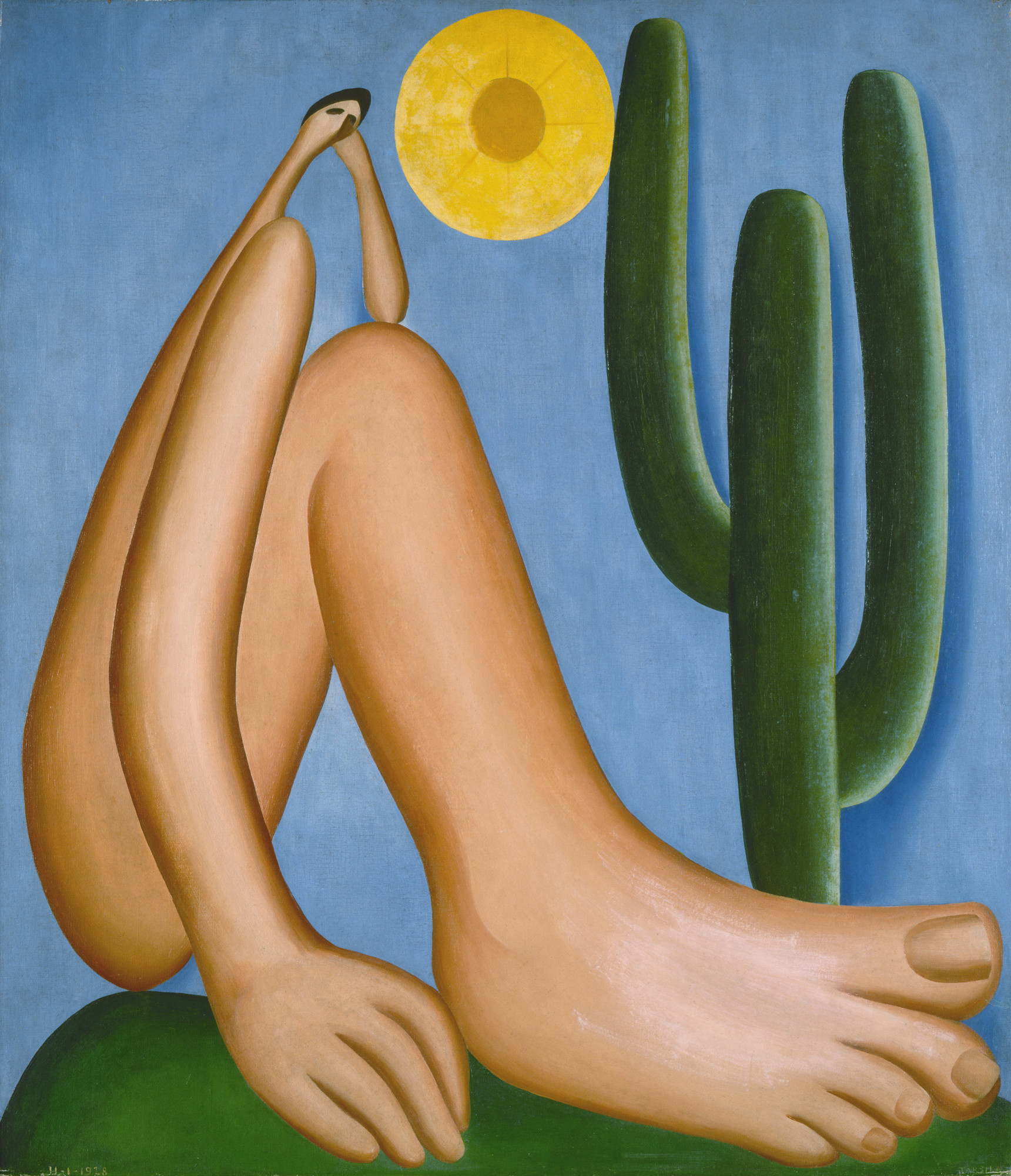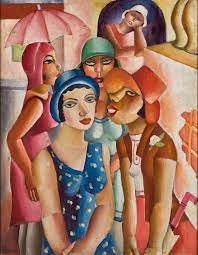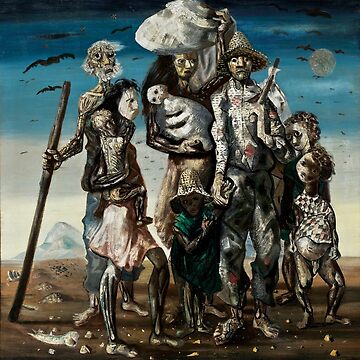Brazil's Three Most Celebrated Painters
Brazil, a country of contrasts, vibrant colors, and immensely talented individuals, stands as a testament to the power of diversity and the richness of cultural fusion. This nation, brimming with natural beauty and a spirited populace, has long been a cauldron of artistic expression and passionate creativity. Brazilian art history is a fascinating journey through time, showcasing a blend of indigenous traditions, colonial influences, and modernist innovations. It has given rise to a unique visual language that captures the essence of its people's struggles, joys, and relentless hope.
From the bold, symbolic works of the Modernist movement to the profound social narratives depicted in the murals of São Paulo, Brazilian art tells the story of a society in constant motion, always evolving yet deeply rooted in its heritage. Today, we will look at the talents of three exceptional persons who not only represent Brazil's artistic heart, but have also left an everlasting impression on the global art scene!
These artists, with their distinct styles and themes, embody the soul of Brazil as a country of art and passion, inviting us to explore the depths of human expression through their eyes. Their legacies remind us of Brazil's enduring capacity to inspire and astonish, making it a true powerhouse of creativity and artistic innovation!
1. Tarsila do Amaral (1886-1973)

Tarsila Do Amaral "Abaporu" (1928)
Tarsila do Amaral stands as a monumental figure in Brazilian art, embodying the vibrant spirit, diversity, and cultural richness of Brazil. As a pioneering member of the Modernist movement in Brazil, Amaral was instrumental in crafting a distinct Brazilian identity in the visual arts, merging local themes with avant-garde aesthetics. Her education spanned from São Paulo to Paris, where she was influenced by European modernist trends, yet her work deeply resonates with the essence of Brazilian culture and landscapes. Amaral's style is characterized by bold use of color, simplified forms, and a unique blend of folk elements with modernist principles. Her paintings often depict rural and urban Brazilian scenes, indigenous people, local animals, and fantastical landscapes, imbued with a sense of nostalgia and national pride. Among her most celebrated works are "Abaporu" (1928), an iconic image that became a symbol of the Anthropophagic Movement, "A Negra" (1923), which reflects on racial and social themes, and "Antropofagia" (1929), embodying the cultural cannibalism concept. She not only helped to define Brazilian Modernism but also inspired subsequent generations of artists to explore and celebrate Brazil's unique identity. Her legacy is a testament to the power of art in shaping national consciousness and fostering a deeper appreciation of Brazil's diverse cultural heritage. Through her vibrant canvases, Tarsila do Amaral invited the world to witness the beauty, complexity, and dynamism of Brazilian life, leaving an indelible mark on the art history of Brazil. In addition to her 230 paintings, Tarsila's contribution to the arts extends through hundreds of drawings, illustrations, prints, murals, and five sculptures. She was essential in pushing modernism in the region and developing a distinct Brazilian style. Inspired by her pioneering technique, other Latin American artists adopted Brazilian motifs and created their own artistic identities. Her influence goes beyond Earth, with the Amaral Crater on Mercury bearing her name, can you just imagine?
2. Di Cavalcanti (1897-1976)

Di Cavalcanti "Five Young Women Of Guaratinguetá"
Emiliano Di Cavalcanti was a luminary in the Brazilian art world, whose vivid canvases celebrated the essence of Brazilian life and culture. A central figure in the Modernist movement in Brazil, Di Cavalcanti's artistry was instrumental in forging a visual language that was distinctly Brazilian, diverging from European influences to spotlight the unique beauty of his homeland. His paintings often feature the urban landscapes of Rio de Janeiro, the festive atmosphere of Carnival, and the figures of samba dancers, fishermen, and workers, thus capturing the pulsating heart of Brazilian society. Among his most celebrated works are "Mulatas", which portrays the rhythm and vitality of Brazilian women; "The Samba", a dynamic representation of the country's iconic dance; and "Five Young Women of Guaratinguetá", which showcases his skill in depicting the rich tapestry of Brazilian life through form and color. His political ideas also inspired his work, and he was an outspoken opponent of social injustice, frequently depicting neglected and marginalized communities. He helped revolutionize Brazilian art during the Semana de Arte Moderna (Modern Art Week) in São Paulo in 1922. This event marked a significant departure from traditional art forms, introducing modernist ideals to Brazil. After immersing himself in the avant-garde circles of Paris in 1923, where he encountered luminaries like Picasso and Fernand Léger, Di Cavalcanti returned home deeply influenced by European modernism. He adeptly melded this with the essence of Brazilian culture, capturing its people, traditions, and the vibrancy of its carnivals. Di Cavalcanti made a lasting impression on the artistic landscape of Brazil with his work, helping to create a visual language that was distinctively Brazilian.
3. Candido Portinari (1903-1962)

Candido Portinari "Migrants"
Candido Portinari was one of Brazil's most esteemed painters, whose work poignantly captures the social, cultural, and political narratives of his country. Born in the small town of Brodowski, São Paulo, Portinari's vast body of work spans over 5,000 pieces, including paintings, murals, and sketches, reflecting a deep empathy towards the Brazilian people and their struggles. Portinari's style evolved from early impressionist influences to a more distinctive, expressionist approach characterized by its bold use of color and dynamic composition. His work is a testament to his commitment to depicting the realities and hardships of Brazilian life, particularly the lives of rural workers and the urban poor. Among his most famous works are the "Café" series, which portrays the backbreaking labor of coffee workers, and the monumental "Guerra e Paz" (War and Peace) murals, commissioned for the United Nations headquarters in New York. In addition to his acclaimed series, Portinari's portfolio is enriched with other significant works like "Migrants," "O Mestiço," and "Baile na Roça," among numerous others, each piece offering a unique lens into the diverse facets of Brazilian life and culture. His paintings are not just visual narratives but also a form of social activism, highlighting issues such as poverty, inequality, and injustice. His work continues to inspire artists around the world and serves as a powerful reminder of art's potential to effect change!
From Brazil to the World!
The artistic landscapes of Brazil have been profoundly shaped by the remarkable contributions of Tarsila do Amaral, Di Cavalcanti, and Candido Portinari. These painters have not only played pivotal roles in the Brazilian modernist movement but also in articulating a distinctly Brazilian aesthetic that resonates on a global scale. Through their innovative use of color, form, and thematic exploration, they have captured the essence of Brazil's vibrant culture, its poignant social realities, and its lush, diverse landscapes.
As we celebrate the legacies of these iconic artists, it's crucial to continue exploring and understanding their impact on both Brazilian art and the wider world of art. TrendGallery beckons you to a broader exploration beyond Brazil, guiding you through the vibrant world of art to uncover a multitude of artists from various corners of the globe!
No Comments Yet...